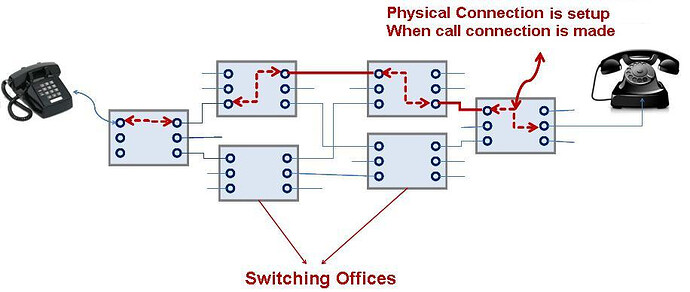Hello Muhammad
An excellent example of circuit switching can be found in the traditional telephony network. Until the mid 1980s, before digital telephone switches were in widespread use, telephony systems used mechanical switching. When you picked up the phone and dialed, telephone switches along the path between you and the party you called would whir into action and psychically connect wires and connectors in such a way that a physical circuit would be created between your phone and the called party’s phone. The following diagram illustrates this:
In such a situation, the physical wire is used for the duration of the call and cannot be shared with any other telephone conversations. These telephone switches, also known as switching offices, create this temporary circuit from end to end until the call is finished. Once it ends, the circuit is released and is made available for other calls to be made. This method of operation is called circuit switching.
Later telephony technologies such as ISDN, although digital, are still considered circuit switched technologies because, instead of reserving a physical wire for exclusive use of a conversation, a specific time slot in the transmission of information is reserved. The concept is the same, the implementation is somewhat different.
In any case, circuit switching is less efficient than packet switching because wires or time slots are reserved unconditionally during a conversation or during data transfer, even if no information is being exchanged. Packet switching on the other hand will simply not send any packets if there is no information to be exchanged.
I hope this has been helpful!
Laz
